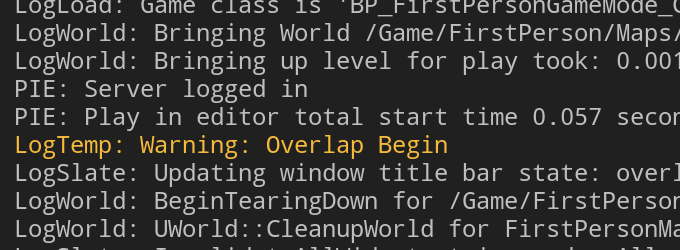概要
Unreal Engineでは、C++で作成したActorクラスのコンストラクタでコンポーネントを定義するのが一般的ですが、場合によってはBlueprint Editorを使ってコンポーネントを構築したい場合があります。この記事では、C++のコンストラクタでコンポーネントを設定せずに、Blueprintでコンポーネントを設定する方法について説明します。
サンプルコードの確認
Unreal EngineのFirstPersonサンプルプロジェクトでは、Characterクラスのコンストラクタでコンポーネントが定義されています。以下はその一例です:
ABlogCharacter::ABlogCharacter() { // Set size for collision capsule GetCapsuleComponent()->InitCapsuleSize(55.f, 96.0f); // Create a CameraComponent FirstPersonCameraComponent = CreateDefaultSubobject<UCameraComponent>(TEXT("FirstPersonCamera")); FirstPersonCameraComponent->SetupAttachment(GetCapsuleComponent()); FirstPersonCameraComponent->SetRelativeLocation(FVector(-10.f, 0.f, 60.f)); // Position the camera FirstPersonCameraComponent->bUsePawnControlRotation = true; // Create a mesh component that will be used when being viewed from a '1st person' view Mesh1P = CreateDefaultSubobject<USkeletalMeshComponent>(TEXT("CharacterMesh1P")); Mesh1P->SetOnlyOwnerSee(true); Mesh1P->SetupAttachment(FirstPersonCameraComponent); Mesh1P->bCastDynamicShadow = false; Mesh1P->CastShadow = false; Mesh1P->SetRelativeLocation(FVector(-30.f, 0.f, -150.f)); }
このように、通常はコンストラクタ内でコンポーネントを初期化しています。しかし、Unityに慣れている開発者としては、Blueprint Editorで視覚的に確認しながらコンポーネントを構築したいと考えるかもしれません。
Blueprintでコンポーネントを設定する方法
以下の手順で、コンストラクタでコンポーネントを定義せずに、Blueprintでコンポーネントを設定する方法を実装します。
.hファイルにフィールドを定義します。ここでは、コンポーネントのキャッシュを保持しますが、必要でなければ省略可能です。
Hoge.h public: UPROPERTY(BlueprintReadOnly, VisibleAnywhere) TObjectPtr<USphereComponent> SphereComponentCache; protected: UFUNCTION() void OnOverlapBegin(UPrimitiveComponent* OverlappedComponent, AActor* OtherActor, UPrimitiveComponent* OtherComp, int32 OtherBodyIndex, bool bFromSweep, const FHitResult& SweepResult);
.cppファイルのBeginPlayメソッドで、Blueprintから設定されたコンポーネントを取得し、イベントをセットします。
Hoge.cpp void AHoge::BeginPlay() { Super::BeginPlay(); // Blueprintで設定されたコンポーネントを取得 SphereComponentCache = FindComponentByClass<USphereComponent>(); // オーバーラップイベントをセット if (SphereComponentCache) { SphereComponentCache->OnComponentBeginOverlap.AddDynamic(this, &AHoge::OnOverlapBegin); } } void AActorTest::OnOverlapBegin(UPrimitiveComponent* OverlappedComponent, AActor* OtherActor, UPrimitiveComponent* OtherComp, int32 OtherBodyIndex, bool bFromSweep, const FHitResult& SweepResult) { UE_LOG(LogTemp, Warning, TEXT("Overlap Begin")); }
このクラスを基にBlueprintを作成し、SphereComponentとColliderを設定します。配置後、オーバーラップイベントが発生すると、ログに「Overlap Begin」と出力されることが確認できます。

結果
このように、コンストラクタ内でコンポーネントを初期化しなくても、BeginPlayでBlueprint上のコンポーネントを取得してイベント処理を行うことが可能です。これにより、視覚的に確認しながら、Blueprint Editorでコンポーネントを構築する柔軟性が得られます。